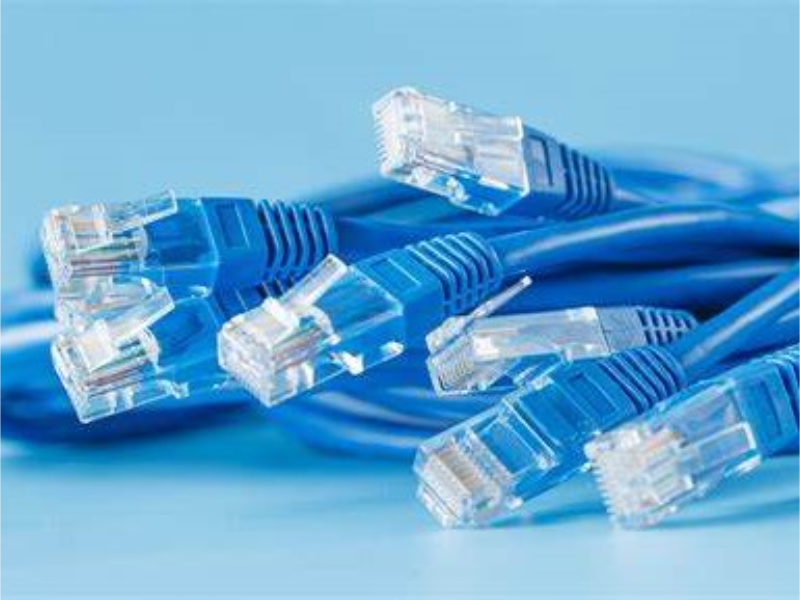- A network patch cable, commonly known as an Ethernet cable, is a versatile and essential component in modern networking.
- They typically feature a flexible, stranded copper conductor construction that allows for easy movement and repositioning without damage, and they are equipped with RJ-45 connectors on both ends for secure and reliable connections.
In the intricate world of technology, a network patch cable is an essential component that facilitates connectivity within digital systems. Often referred to as Ethernet or patch cables, these versatile cables have evolved significantly alongside the rapid growth of digital communication. The purpose of this article is to delve into the world of network patch cables, exploring their history, applications, and the technological nuances that make them indispensable in today’s interconnected world.
Understanding network patch cables
A network patch cable, commonly known as an Ethernet cable, is a versatile and essential component in modern networking. These cables are designed to connect various devices such as computers, routers, switches, and other network hardware over short distances within a local area network (LAN).
They typically feature a flexible, stranded copper conductor construction that allows for easy movement and repositioning without damage, and they are equipped with RJ-45 connectors on both ends for secure and reliable connections.
Network patch cables are available in different categories, such as Cat5e, Cat6 and Cat8, each offering varying levels of performance in terms of speed and bandwidth. They are crucial for establishing both wired internet connectivity and device-to-device communication in homes, offices, and data centres.
Also read: FibreWorld supports fibre optic cable networks in Nigeria
Evolution of network patch cables
The journey of network patch cables began with coaxial cables, which were eventually overshadowed by the introduction of twisted-pair cables, particularly categories like Cat5 and Cat6. These cables employ a twisting technique to mitigate electromagnetic interference, thus enhancing data throughput and reliability. The emergence of fiber optic technology marked a significant advancement, offering high-speed data transmission over long distances, making it ideal for applications in data centres and telecommunications.
Applications of network patch cables
Network patch cables are integral to various sectors, highlighting their indispensable role in our interconnected world:
- Data centres: They serve as the lifelines of data centres, connecting servers, switches, and storage systems where high-speed, low-latency connectivity is crucial. Fiber optic patch cables are often the preferred choice in these environments.
- Telecommunications: Patch cables are vital for rapid data transmission over long distances in the telecom industry. They form the backbone of high-speed internet and telecom networks.
- Office networks: Ethernet patch cables are common in office settings, linking computers, printers, and other devices to local area networks (LANs). Their durability and reliability are key to maintaining productivity.
- Home networking: With the proliferation of smart homes, Ethernet and fiber optic patch cables are becoming standard in residential areas, ensuring fast and stable connections for streaming, gaming, and home automation.
- Broadcasting and audiovisual: In broadcasting, particularly during live events, patch cables enable swift and dependable data transfer for cameras, audio equipment, and broadcasting gear.
Also read: What is a network cable?
Technical specifications and types
Network patch cables are available in various types, each designed for specific applications. The most common types are:
- Ethernet patch cables: Typically used to connect devices like computers and printers to a network hub, switch, or router. They are also useful for travelers needing to establish wired internet connections in places without Wi-Fi.
- Crossover cables: A specific type of Ethernet patch cable used to connect two computers directly to each other without the need for a switch or hub.
- Fiber optic patch cables: Utilizing light pulses for data transmission, these cables are chosen for their high-speed capabilities and resistance to interference.
Construction and usage
Ethernet patch cables are designed for flexibility and frequent repositioning without damage to the cable or connection. They are usually shorter than other networking cables, intended for connecting devices within close proximity, often within the same room or over short distances.
Network patch cables connect our world with reliability and speed. From the early days of coaxial cables to the modern era of fiber optics, their evolution mirrors our quest for more efficient data transfer. As technology progresses, these cables continue to play a vital role in connecting our expanding digital landscape.

